Short Sunderland DD848, Mount Brandon, Kerry, August 1943
On the 22th August 1943, less than a month after the tragic
crash of the British Overseas Airways Corporation Sunderland
flying boat, G-AGES, another Sunderland
flying boat crashed into the same area of sloping ground on
Slieveglass, next to Mount Brandon on the Dingle Peninsula,
Kerry. This second crash involved a front line Royal Air Force
Sunderland flying boat from 201 Squadron based at Pembroke Dock
in Wales.
The Irish Army's 15th Infantry Battalion filed a report on the
24th August 1943 that began with the following information.
A British Sunderland Flying Boat
(Shortt Type) of the R.A.F. crashed at Mount Brandon
(0337-1143) at 05:45 hrs on the 22/8/'43. There was a
crew of 11 (eleven) of which 8 (eight) were killed and 3
(three) received slight injuries. The injured were
removed to Tralee District Hospital.
The report went on to name the men on board where they could be
identified from effects found on them or directly from the
survivors. Three of the men could not be firmly identified
by the Irish Army from available evidence but the survivors were
able to provide names.
It ends with a description of the disposition of the
remains: The bodies were removed
from Brandon by lorries en route for Northern Ireland at
09:10 hrs on the 23rd instant. The officer in charge
of the party conveying bodies had with him for hand-over,
Certificates of death, and the personnel effects of each
identified body in a sealed envelope. Each envelope
bore on the outside, Number, Rank and name of the owner and
a list of its contents.
At the same time, it was reported that eight machine guns were
recovered from the wreckage, the four from the tail turret being
described as undamaged.
On the 20 September 1943 the Irish Air Corps filed a summary
report of events. Among the recorded items were:
Condition of Aircraft:
Completely burned out. Tail and Tail Turret
remain but are unserviceable. One engine was
burned out. 3 remaining are unserviceable, owing to
distance they were flung from the fuselage.
Probable Mission: On
Rescue work from base in Northern Ireland
The land where the Aircraft
crashed is boggy, and treacherous, salvage
of remains of aircraft is not feasible.
While it is not
mentioned in the above summary, some burned out ordnance was
recovered from the site. It is worth noting the
mention that the aircraft was on "Rescue work". It
needs to be confirmed from the Irish Army report again,
whether the survivors told the Irish Army this, or if this
was simply inserted by the Irish as a means of avoiding
interning the survivors. At this stage of the war,
Allied airmen were not being interned in any case, and
injured men were never likely to be interned.
The remains were
taken down from the crash site and driven to the border post
at Beleek where they were handed over on the night of 23rd
of August. The injured were kept in Tralee Hospital
until being released from its care on August 30th, after
which they were driven to the border via Roscommon and
handed over on the 31st of August.
The following year,
in May 1944, the land owner, Michael Fitzgerald, Cappagh
Cross, wrote to the Irish Defense Forces to complain about
the amount of wreckage that still remained at the site and
trespassers visiting, but he was told to deal with it
himself.
The Operations Record Book for 201 Squadron is sparse on
information about the crash. It does record the mission, a
Sea Slug mission that would take the aircraft out into the bay
of Biscay to search for U-Boats running on the surface.

The aircraft carried a crew of eleven men of which eight were
killed in the crash. And while the crash of the civilian
Sunderland G-AGES a month before made the headlines all over
Ireland, the UK and further afield, the eleven military
personnel on Sunderland DD848 would receive no attention save
for the sad death notices published by family and friends in
local newspapers across the United Kingdom. With the eight men
being from England it might have been expected that they would
have been returned to their families for burial, however today,
one can find that six, F/Lt Grossey, F/Lt Griffin, F/O
Wilkinson, F/Sgt Coster, F/Sgt Pickford and Sgt Tilt are
actually buried in adjacent graves in the Church of Ireland
graveyard in Irvinestown, County Tyrone in Northern Ireland.
The British Air Ministry crash record card held by the RAF
Museum in Hendon provides the RAF findings on the crash. While
the handwriting on the report is difficult to read, the RAF
concluded that the aircraft was flying to the south east of its
intended track in darkness with low cloud. The text reads:
A/C (FLT) crashes into hillside &
catches fire. Cause obscure. A/C flying to the
east of intended track. Weather dark with low
cloud. AOC ?????. AOC in C Concurs. A/C
off course. Flying below minimum safety height. Error
of navigation due to? error of navigation. S.E.
operator boobed. ??? Competent SE operator ????
regard to height
CO Poor crew co-op. Met underestimated W/V
AOC Faulty navigation
AOC in C - Concurs
SE in the text below refers to
Special Equipment and refers to the electronic navigation
aids carried by the aircraft.

Given that the crash occurred in neutral Ireland and the
aircraft was completely destroyed, there was no investigation as
people might understand nowadays. There were however three
survivors, Sgt's. Mclean, Applegate and Davies.
A review of the Operational Records Book (ORB) for 201
Squadron reveals the flying history of the 11 men.
F/O Guy Nelson WILKINSON 51121 was posted in to 201
Squadron with effect from 3 August 1943.
F/Lt Charles Seymour GROSSEY 45199 was posted to
201 Squadron on 1st June 1943
F/Lt Arthur Charles GRIFFIN 62311 Was posted in to 201
Squadron with effect from 3 August 1943
F/Sgt Norman Baron PICKFORD 657043 can be found in the
ORB from at least Sept 1942, earlier than that, only men of
Warrent Officer rank and upwards are recorded.
F/Sgt Joseph William BURTON 1287499 His name appears on
just one other operational flight on August 17th in the ORB,
so this tragic mission was possibly only his second sortie
with the squadron
F/Sgt John Robert COSTER 1259732 + F/Sgt Coster's name
can be found in the ORB from at least November 1942.
F/Sgt Walter Noel PITTS 749904 + F/Sgt Pitt's name can
be found in the ORB from at least November 1942.
Sgt George Frederick Walter TILT 1338702 + Sgt Tilt's
name can be found in the ORB from at least July 1943.
Sgt John Sidney APPLEGATE 647007 Sgt Applegate's name
can be found in the ORB from at least Nov 1942.
Sgt George William DAVIES 952226 Sgt Davie's name is
be found in the ORB from at least February 1943.
F/Sgt William MCLEAN 996639 F/Sgt Mclean's name can be
found in the ORB from at least Feb 1943.
The core of the crew had thus come together during the summer
of 1943 and flown a number of missions under the command of
F/Lt Grossey, however, it is worth noting that crews swapped
and changed quite a bit in 201 Squadron.
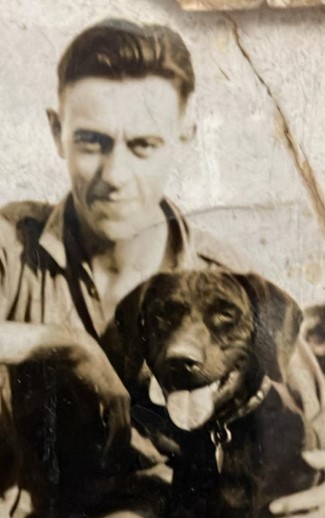 F/Lt Charles Seymour GROSSEY
45199, 1st Pilot, Captain,
F/Lt Charles Seymour GROSSEY
45199, 1st Pilot, Captain,
CWGC records F/Lt Grossey was the husband of Adelaide
Lily Ann Grossey, of Kidlington, Oxfordshire. The couple
had married in 1938 in London and Adelaide and their daughter
are found in the 1939 register living at RAF Station Little
Rissington. His mother lived in St Pancreas,
London. His brother, Raymond, was missing in action on
4th September 1939 having been lost on an early bombing raid
on Heligoland Bight, Germany.
Their parents were Charles and Louise Grossey and they had
two other brothers, Dennis who served with the RAF during and
after the war, and Ralph who was a Royal Navy officer.
Charles had joined the RAF back in 1929 and trained early on
as a Wireless Operator/Mechanic, and flying for a time in
India with 28 Squadron. He then transferred to Egypt,
joined 4 Flying Training School and trained as a pilot, before
being posted to 84 Bomber Squadron in Iraq. Following
this, he was posted back to England and joined the Staff of 6
SFTS and spent some time at the No. 2 Central Flying
School. he spent four months of 1941 at the RAF College,
followed by various postings as an instructor. He
remainder an instructor until February 1943 when transferred
to No. 3 School of General Reconnaisance. Two months
later he was at 4 (C)OTU finishing up with a transfer to 201
Squadron on the 1st of June 1943.
At the time of his death, Adelaide and Charles had a young
daughter Barbara and it was through the kindness of her family
in 2024 that this photo of Charles was provided.
His daughters family had these photos of Charles with other
personnel and in tropical climates.
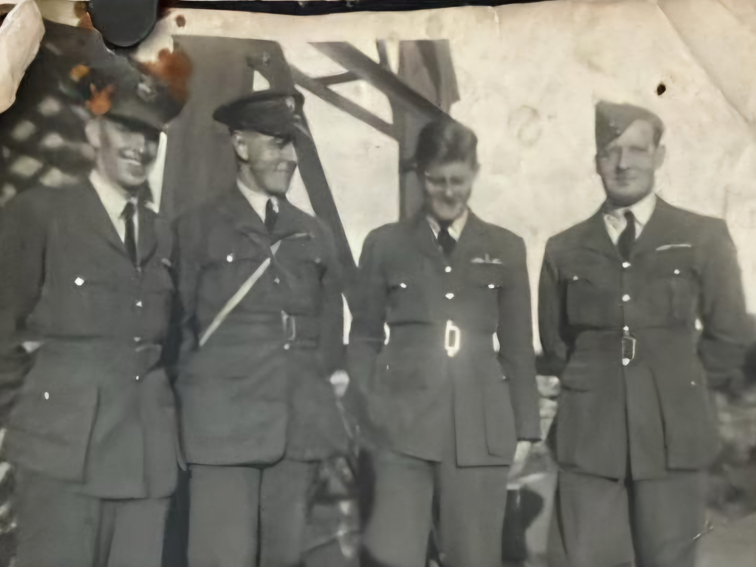
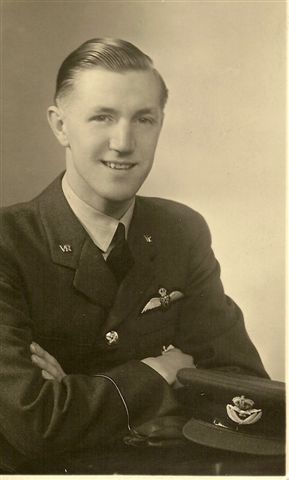 F/Lt Arthur
Charles GRIFFIN 62311, 2nd Pilot
F/Lt Arthur
Charles GRIFFIN 62311, 2nd Pilot
Arthur was the son of Charles and Emma Griffin of 27 Queen
Street, Leighton Buzzard. He had been an employee of the
of the I & R Morley Ltd. clothing company according to the
book, The Secrets of Q Central: How Leighton Buzzard
Shortened the Second World War by Paul Brown and Edward
Herbert.
The photo of Arthur was very kindly provided by the daughter
of his parents neighbours. She also found a copy of the
memorial service held in his honour at the families local
church on 27th August 1943. His name was placed on his
parents headstone and on the local baptist church war
memorial.

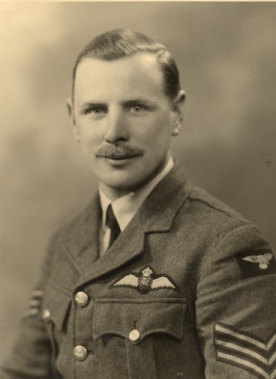 F/O Guy
Nelson WILKINSON 51121, 3rd Pilot
F/O Guy
Nelson WILKINSON 51121, 3rd Pilot
The family of F/O Guy Nelson WILKINSON 51121 were
instrumental in efforts to remember this crew. His
daughter Maureen and her husband Les Ingram traveled to
Ireland to visit his grave and reached out to try and contact
families of the other airmen.
Guy was born in 1915 to Guy and Mary Wilkinson in Lancashire.
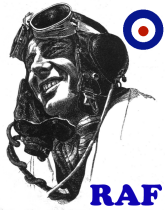 F/Sgt Norman Baron PICKFORD 657043,
Navigator on the crew, lived at Maythorne, 90 Holmfield Road,
Leicester and formerly off 'Broadholme', Manor Rd, Leicester.
He was the son of Edith and James Pickford and had been born
in Babiwell Derbyshire in July 1948.. His mother had
passed away shortly after he was born. Norman had
travelled with his father and step sister Elsie.
F/Sgt Norman Baron PICKFORD 657043,
Navigator on the crew, lived at Maythorne, 90 Holmfield Road,
Leicester and formerly off 'Broadholme', Manor Rd, Leicester.
He was the son of Edith and James Pickford and had been born
in Babiwell Derbyshire in July 1948.. His mother had
passed away shortly after he was born. Norman had
travelled with his father and step sister Elsie.
He enlisted in the Territorial Army before the war, and in
June 1941, transferred to the RAF. He at first began
pilot training at 15 Elementary Flying Training School, but
after a month in September 1941, he transferred instead to
training as an observer or navigator with No. 1 Air Observer
School. January 1942 would find him at No/ 10 AOS
finishing with a posting to 4 (C) OTU in May. Two months
later, he was being posted to 423 RCAF Squadron for only a
month before a final posting to 201 Squadron in early August
1942. He remained with the unit for the remainder of the
twelve months leading up to the crash.
His entry on the calendar of wills for 1944 records him as "PICKFORD, Norman Baron otherwise
Norman otherwise Norman Byron of Maythorne 90
Holmfield-road LEICESTER died 22 August 1943 on war
service".
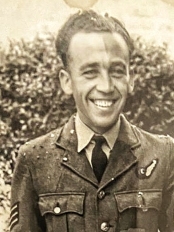 Sgt George William
DAVIES 952226, Flight Engineer
Sgt George William
DAVIES 952226, Flight Engineer
George, one of the survivors gave his next of kin and address
as his wife at 116 Kensington Road, South-end of Sea, Essex.
His family were able to provide this scan of his log book,
which rather understates events as many wartime documents
do. It is noted that he had flown mostly that month with
F/O E F H Bent J5910 and had been posted into 201 Squadron
only in July 1943. His log book earlier confirms his
posting to 201 Squadron in February 1943.
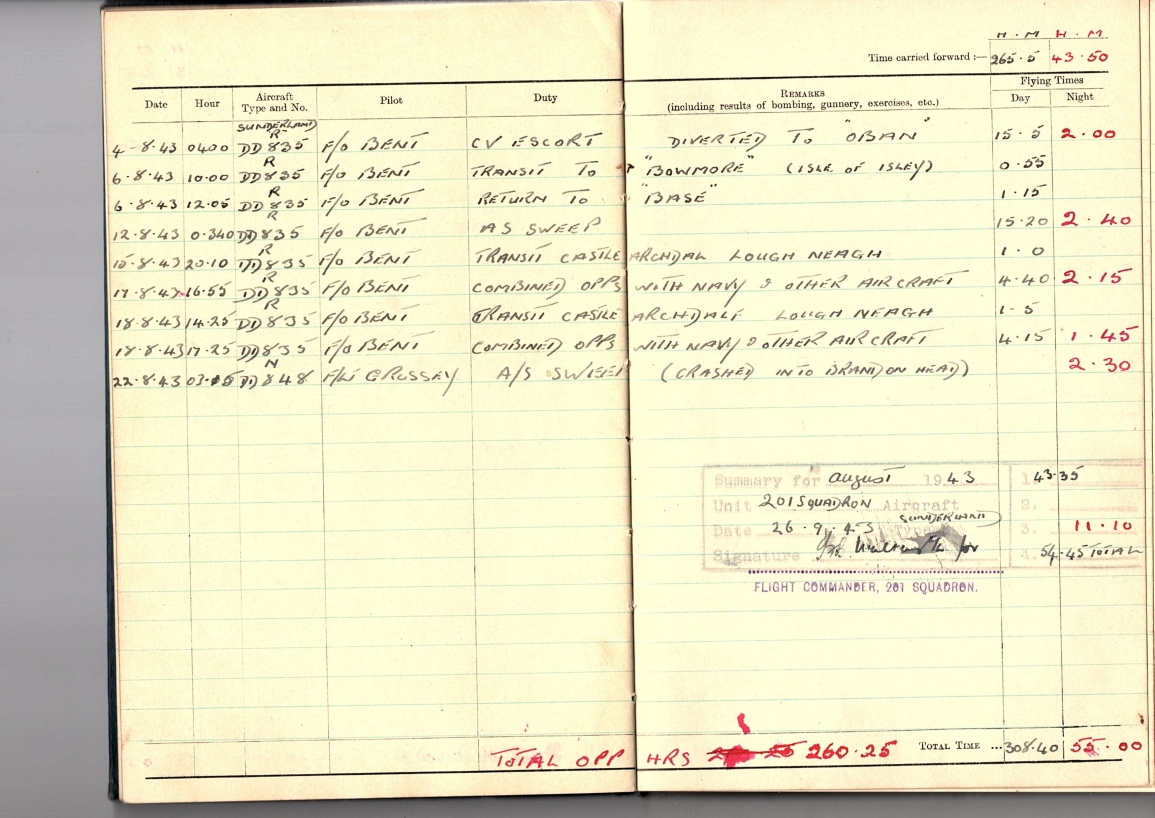
Sgt Davies was no stranger to the dangers of war time flying
having survived the crash of 120 Squadron Liberator AL519 on
3rd November 1942. That aircraft had taken off from
Ballykelly on night flying training when it crashed into
Benevenagh mountain near the airfield. The pilot was
killed but the remaining crew survived.
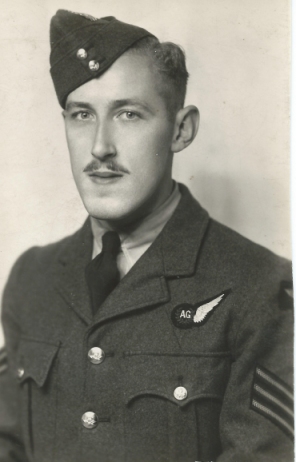 F/Sgt John Robert COSTER 1259732,
Wireless Operator/Air Gunner
F/Sgt John Robert COSTER 1259732,
Wireless Operator/Air Gunner
John was the son of Rosina and John Coster, having been born
in 1920 in . John was married to Ivy May Carlier in
1940. Ivy would remarry in early 1945 only to loose her
second husband in the crash of a Mosquito fighter in Holland a
few weeks later.
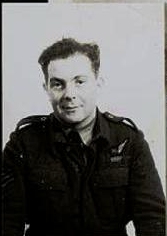 F/Sgt William MCLEAN
996639 DFM, Air Gunner
F/Sgt William MCLEAN
996639 DFM, Air Gunner
Sgt William McLean 996639 had an address at
Alwinton, Harbottle, Morpeth in Northumberland recorded by the
Irish Army and had had an already busy wartime career.
He had already served a tour of duty with Bomber Command's, 7
Squadron on Stirling bombers. On the night of 6 Dec
1942, his aircraft, Stirling R9259 was shot down over
France. Of the crew of seven, six lost their lives with
only Sgt McLean managing to escape the aircraft and then
evaded capture and escaped through Belgium to neutral Spain
and thereafter making his way back to England. AS can be
seen above from the 201 Squadron ORB, he back in service with
Coastal Command in February 1943.
Les Ingram provided the following information about Sgt
Mclean. Sergeant W McLean was
recommended for the DFM by his squadron commander, Wing
Commander O R Donaldson, in a letter dated 24 January 1943
(PRO AIR2/4947 2449) - 'Whilst over the target the
aircraft was hit by anti-aircraft fire and the rear turret
was put out of action. Sergeant Mc.Lean made his turret
function under manual control and when the aircraft was
later attacked by a night fighter, his conduct, courage,
determination and devotion to duty were of the highest
order under very harassing circumstances'. Despite this
statement the recipient, in a letter dated 19 October
1980, regarded the award of his decoration as being due to
his successful 'evasion' and escape from German occupied
Europe following the destruction of his aircraft. His
letter states: 'We were returning from a raid..in a
Stirling of No.7 Squadron, in which I was a rear gunner.
When over Belgium the aircraft had a direct hit in the
port wing, and burst into flames. The aircraft started to
go down, and pieces of wing was (sic) breaking off. I
could get no contact with my skipper, so I decided to bale
out. I managed to get out with difficulty as the aircraft
was going straight down, and I landed in a ploughed field.
I managed to evade capture by hiding for several days
until the search for the survivors of the aircraft crash
by the German army had been called off. After 5 days I
went to a remote farm and the farmer gave me a civilian
suit of clothes, and put me in touch with an escape
organization. From then on I travelled to Brussels, Paris,
Bayonne. I then walked over the mountains into Spain, and
contacted the British Consul in San Sebastian. From then
on I went by road to Madrid, Saville (sic) and by ship to
Gibraltar, and back to England by air. I was the only
survivor of the crew....I was awarded the DFM for escaping
from Germany in 1942'.
It is understood William was born in Morpeth in
1912 and passed away in 1988 in Northumberland.
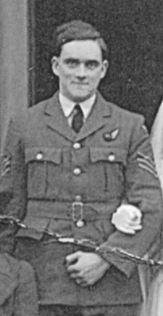 Sgt John Sidney
APPLEGATE 647007, Flight Mechanic Engines/Air Gunner
Sgt John Sidney
APPLEGATE 647007, Flight Mechanic Engines/Air Gunner
Sgt Applegate gave the Irish Army his next of kin details and
address as his wife, at Bee Hive, Port Dinorwic, in North
Wales.
He was the son of Sydney and Annie Applegate and the family
lived in Kent. In 1942, he married Vera Pennington, and
their son was able to recount his father telling him about the
crash that I left him with nightmares after the war. He
also recalls his father commenting that local people had gone
through the wreckage and looted items from the crash site.
John passed away in Wales in 2005 and is buried in his native
Kent.
 Sgt George Frederick Walter TILT
1338702, Wireless Operator/Air Gunner - Seeking photo
Sgt George Frederick Walter TILT
1338702, Wireless Operator/Air Gunner - Seeking photo
Born in 1905 in Bromsgrove, Worcs, George was the son of
Frederick Charles and Eliza Tilt and the husband of Jessie
Tilt, of Rednal, Birmingham. He and Jessie had married
in late 1936 in Birmingham.
His widow, Jessie, passed away in 1982
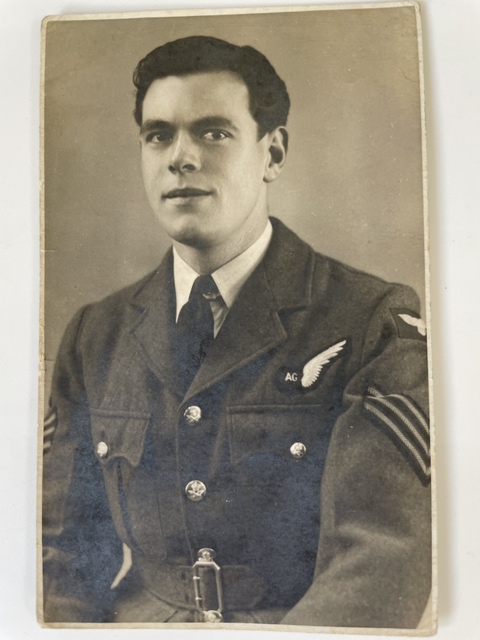 F/Sgt
Joseph William BURTON 1287499, Wireless Operator
Mechanic/Air Gunner - of Essendonbury Cottage, Essendon Hill,
Hatfield
F/Sgt
Joseph William BURTON 1287499, Wireless Operator
Mechanic/Air Gunner - of Essendonbury Cottage, Essendon Hill,
Hatfield
Son of Joseph and Florence Lilian Burton, of Essendon.
The 1939 Register finds Joseph living with his parents and
brother Ronald in Essendonbury Cottages, where Joseph is
listed as a bricklayer.
He joined the RAF in September 1940, and passed through the
various training establishments, until completing gunnery
training with 9 Air Gunnery School. his service record is a
little difficult to read but he was posted after to 4 OTU and
perhaps 1447 Flight. He then appears to be posted to 228
Squadron for a short period after a posting which is redacted
on his service file and may indicate sickness. He was
sent back to 4 (C) OTU and eventually he is found posted to
Castle Archdale in Northern Ireland on the first of April
1944.
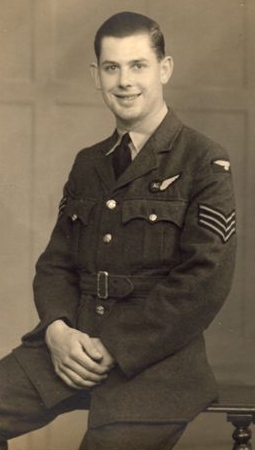 F/Sgt Walter Noel
PITTS 749904, Flight Mechanic Airframe/Air Gunner.
F/Sgt Walter Noel
PITTS 749904, Flight Mechanic Airframe/Air Gunner.
Walter was the son of Cicily and Walter Pitts, of Paignton,
Devon and was born in 1920 in Richmond, Surrey. He
appears to have been an only child. His parents were
living in Ealing, London in 1939, but Walter does not appear
on the 1939 Register, he was likely already in the services at
that point based on his low service number.
His remains were returned to Paignton for burial. His
cousin was kind enough to provide the photo shown.
If you can provide any help in finding relatives of the crew
members listed above with no photos I would be most grateful.
The photo below was published in a post war newspaper, likely
in the 1990's, the date is to be confirmed. It shows the
white painted tail of the aircraft.
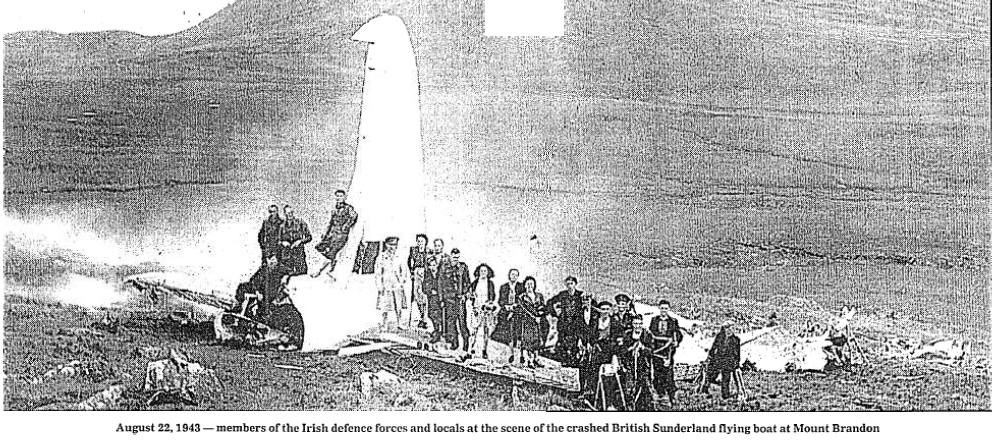
A similar photo, with additional people visible was found on
the Irish Military Archives 2024 Calender. In this case
the contents are much clearer. The view shows the
aircraft's tail section, the rear of the fin and rudder are
nearest the camera. The rudder is present but hanging to
one side. The damged ring of the tail turret mount is
just about visible, while the people at the right of the photo
may be sitting in the rear turret.
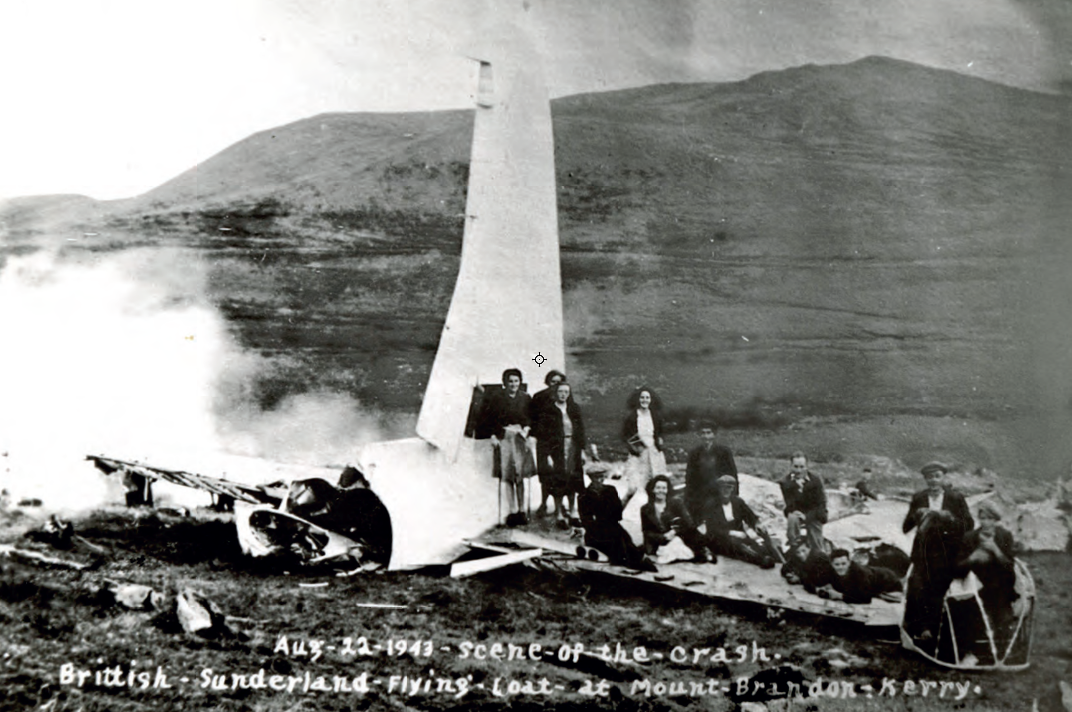
The funeral of the deceased personnel was photographed on the
day and forwarded it seems to relatives. These four
images were provided by Charles Grossey's daughters family.
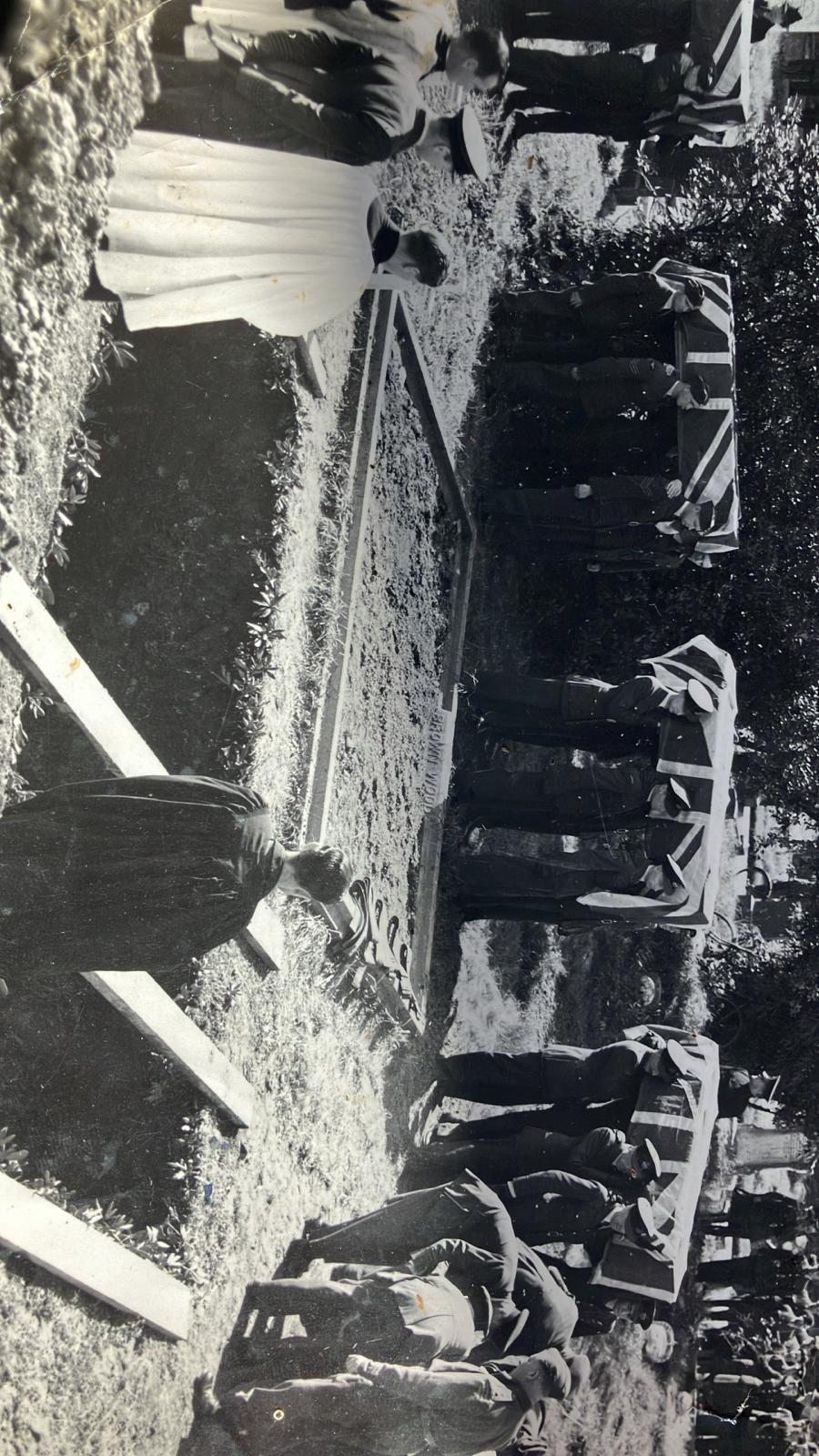
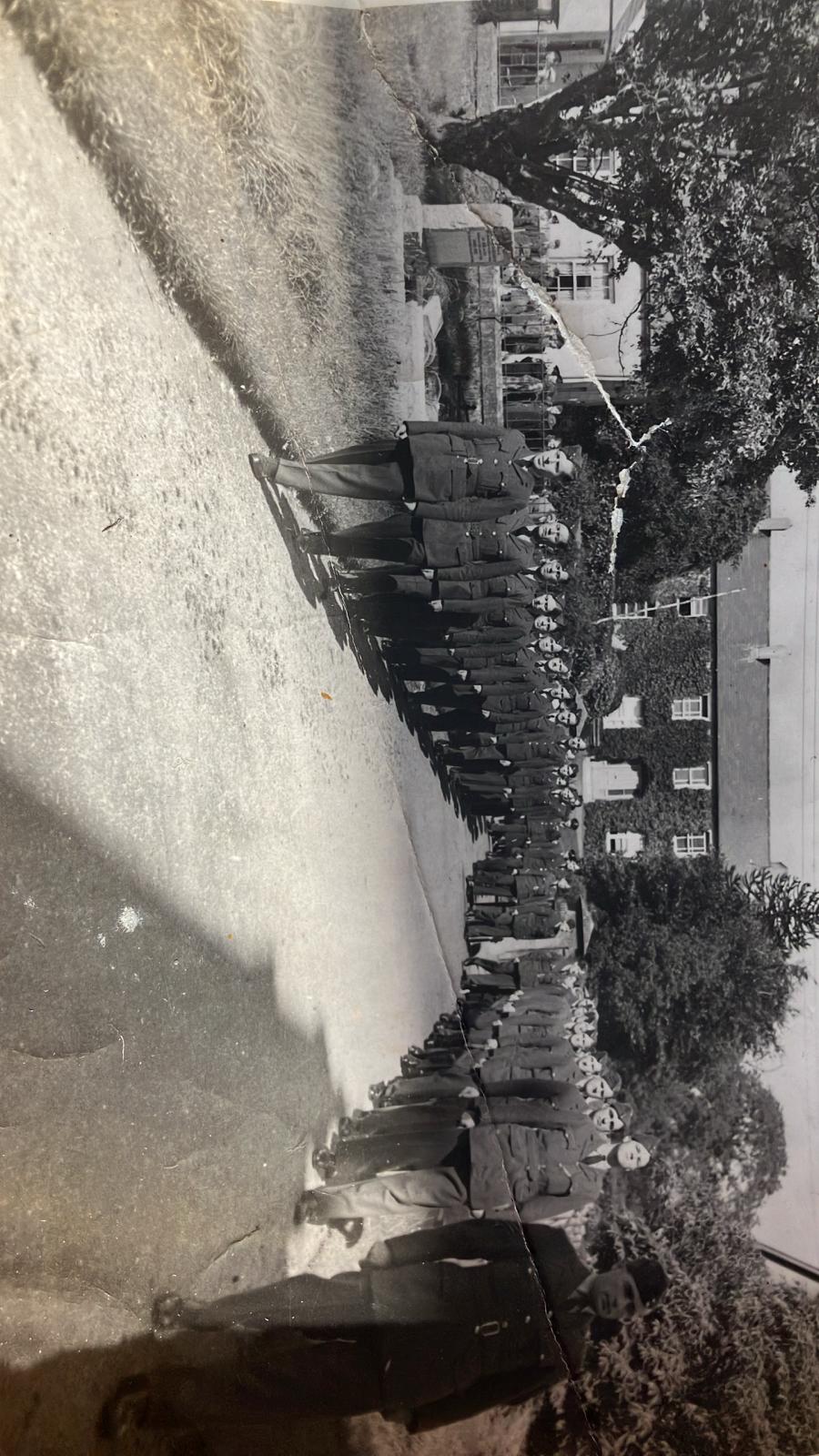
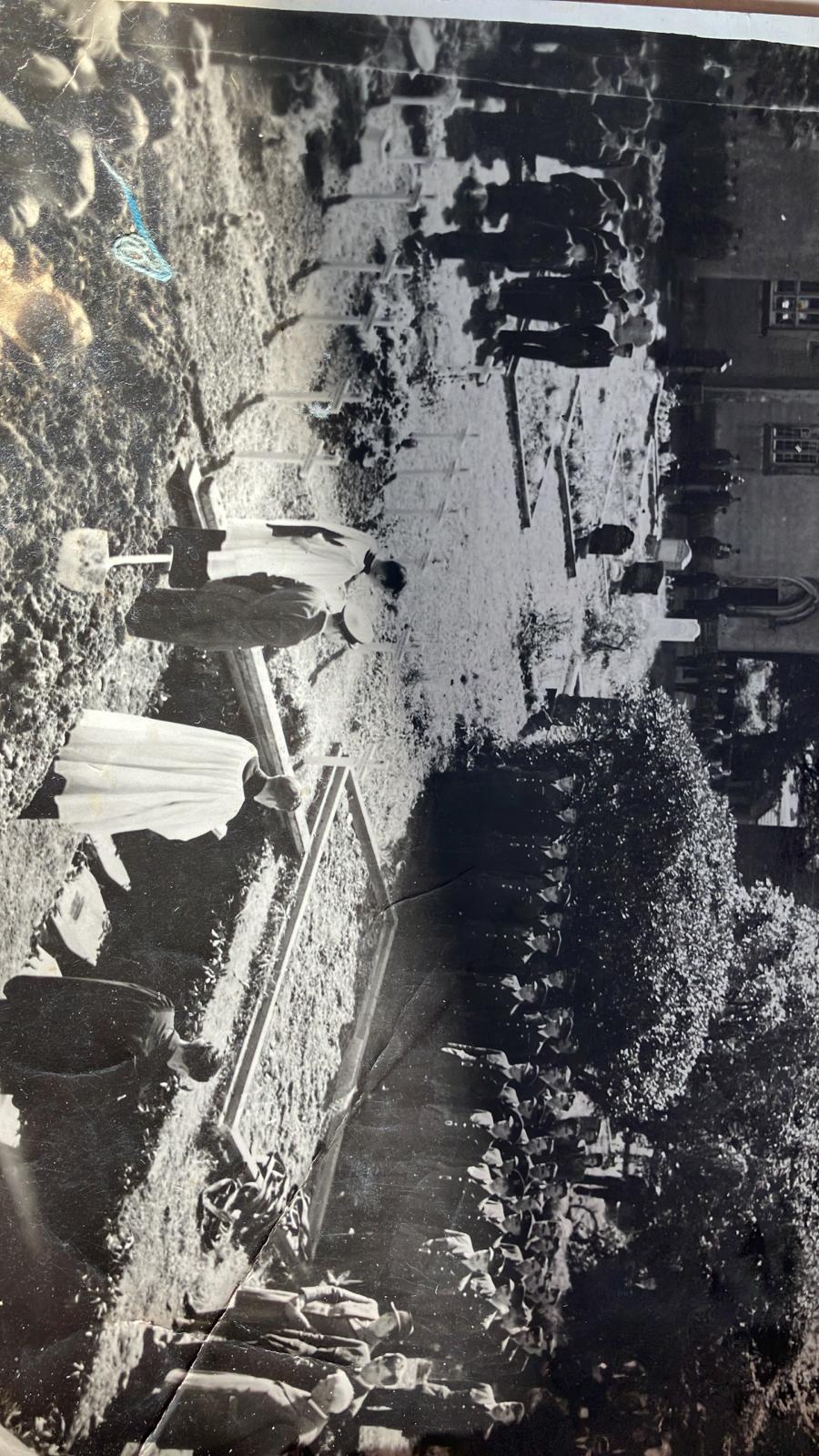
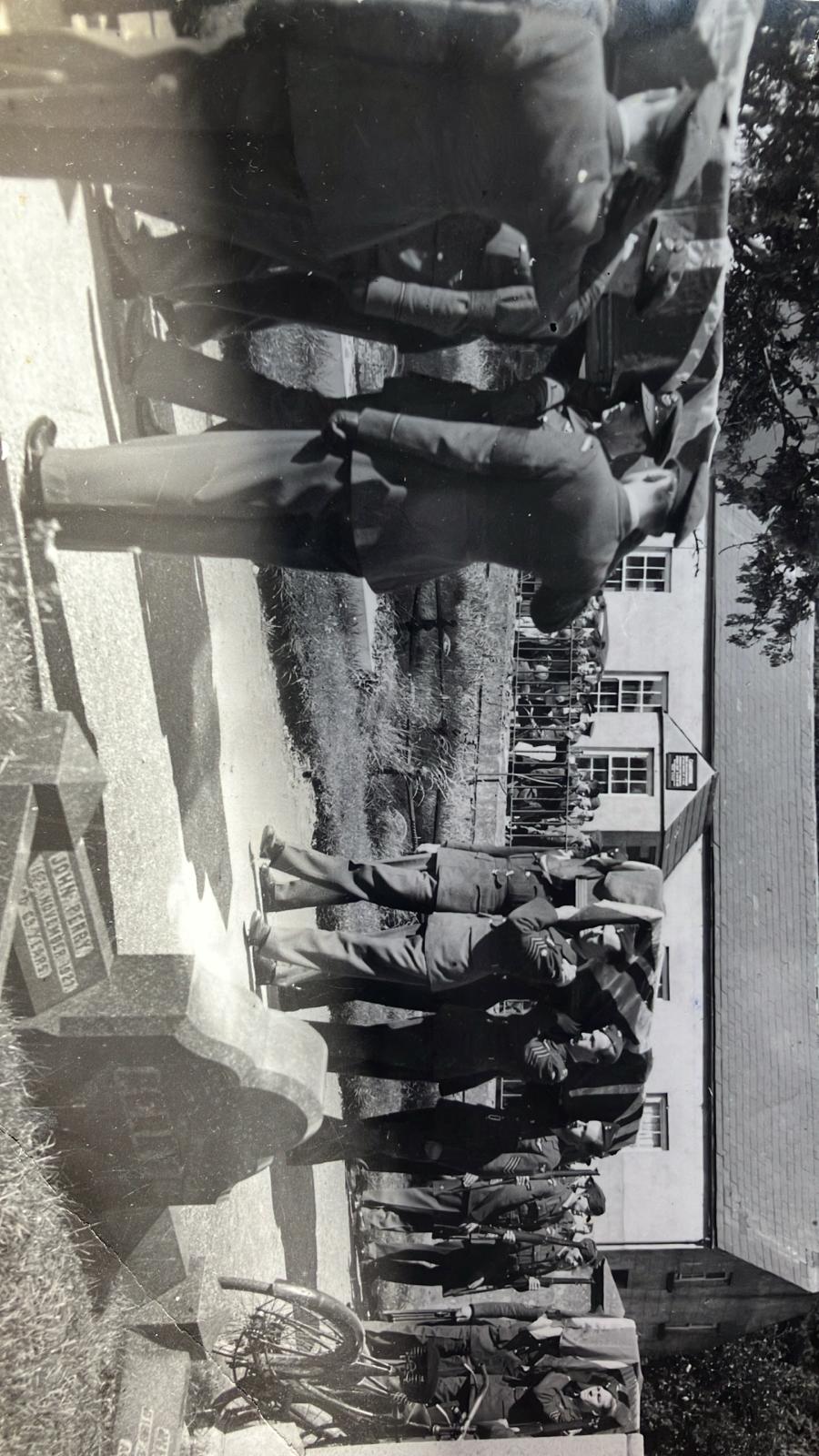
The following photos were taken during a hike up the slope of
Slieveglass in July 2007. They show some of the remains of
Sunderland DD848 which lie on the mountain side. All four
Pegasus engines can be found in the heather.
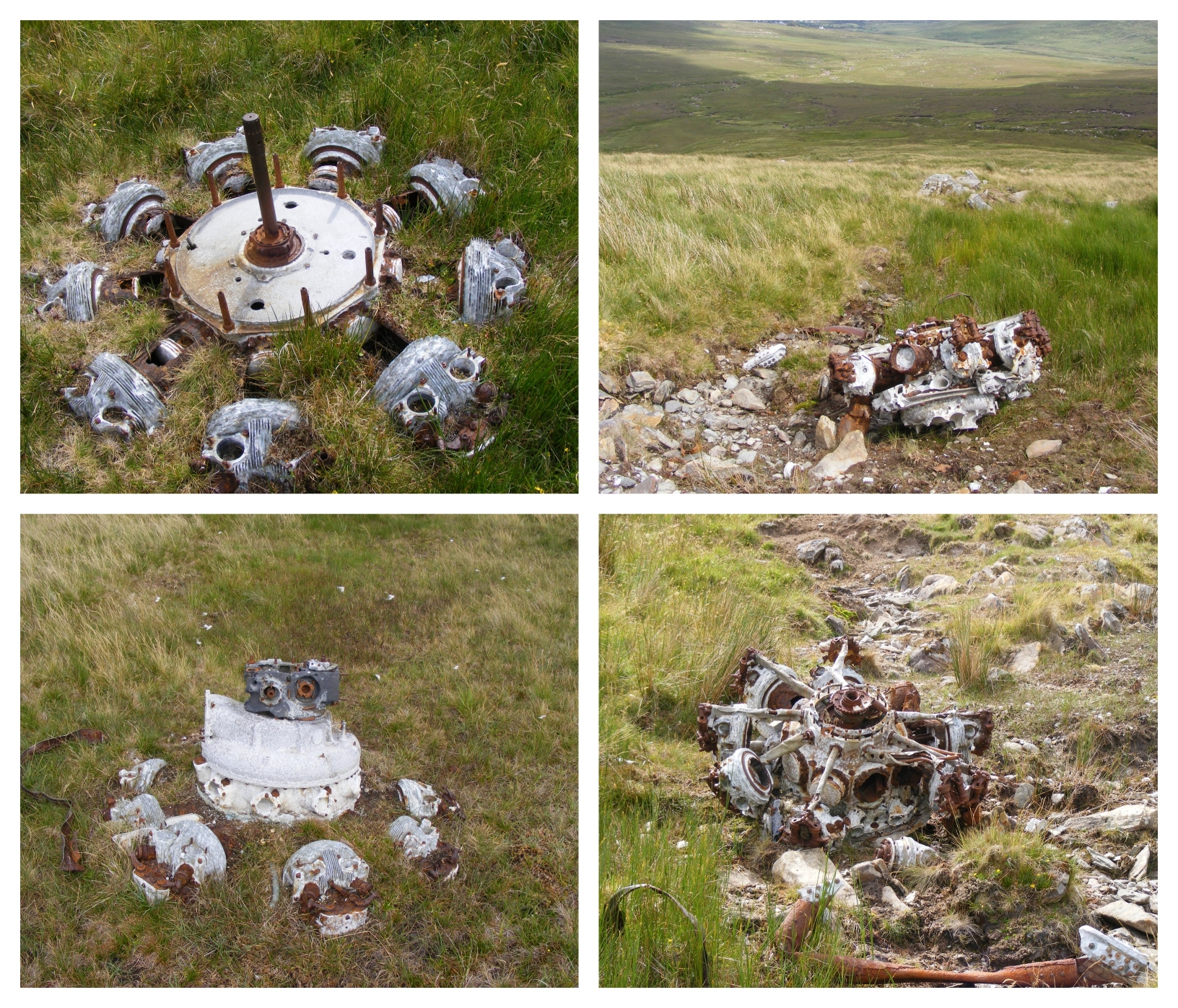
Compiled by Dennis Burke, 2024, Dublin and Sligo. If
you have information on any of the people listed above, please
do contact me at dp_burke@yahoo.com



 F/Lt Charles Seymour GROSSEY
45199, 1st Pilot, Captain,
F/Lt Charles Seymour GROSSEY
45199, 1st Pilot, Captain, 
 F/Lt Arthur
Charles GRIFFIN 62311, 2nd Pilot
F/Lt Arthur
Charles GRIFFIN 62311, 2nd Pilot
 F/O Guy
Nelson WILKINSON 51121, 3rd Pilot
F/O Guy
Nelson WILKINSON 51121, 3rd Pilot F/Sgt Norman Baron PICKFORD 657043,
Navigator on the crew, lived at Maythorne, 90 Holmfield Road,
Leicester and formerly off 'Broadholme', Manor Rd, Leicester.
He was the son of Edith and James Pickford and had been born
in Babiwell Derbyshire in July 1948.. His mother had
passed away shortly after he was born. Norman had
travelled with his father and step sister Elsie.
F/Sgt Norman Baron PICKFORD 657043,
Navigator on the crew, lived at Maythorne, 90 Holmfield Road,
Leicester and formerly off 'Broadholme', Manor Rd, Leicester.
He was the son of Edith and James Pickford and had been born
in Babiwell Derbyshire in July 1948.. His mother had
passed away shortly after he was born. Norman had
travelled with his father and step sister Elsie. Sgt George William
DAVIES 952226, Flight Engineer
Sgt George William
DAVIES 952226, Flight Engineer
 F/Sgt John Robert COSTER 1259732,
Wireless Operator/Air Gunner
F/Sgt John Robert COSTER 1259732,
Wireless Operator/Air Gunner F/Sgt William MCLEAN
996639 DFM, Air Gunner
F/Sgt William MCLEAN
996639 DFM, Air Gunner Sgt John Sidney
APPLEGATE 647007, Flight Mechanic Engines/Air Gunner
Sgt John Sidney
APPLEGATE 647007, Flight Mechanic Engines/Air Gunner F/Sgt
Joseph William BURTON 1287499, Wireless Operator
Mechanic/Air Gunner - of Essendonbury Cottage, Essendon Hill,
Hatfield
F/Sgt
Joseph William BURTON 1287499, Wireless Operator
Mechanic/Air Gunner - of Essendonbury Cottage, Essendon Hill,
Hatfield F/Sgt Walter Noel
PITTS 749904, Flight Mechanic Airframe/Air Gunner.
F/Sgt Walter Noel
PITTS 749904, Flight Mechanic Airframe/Air Gunner.





